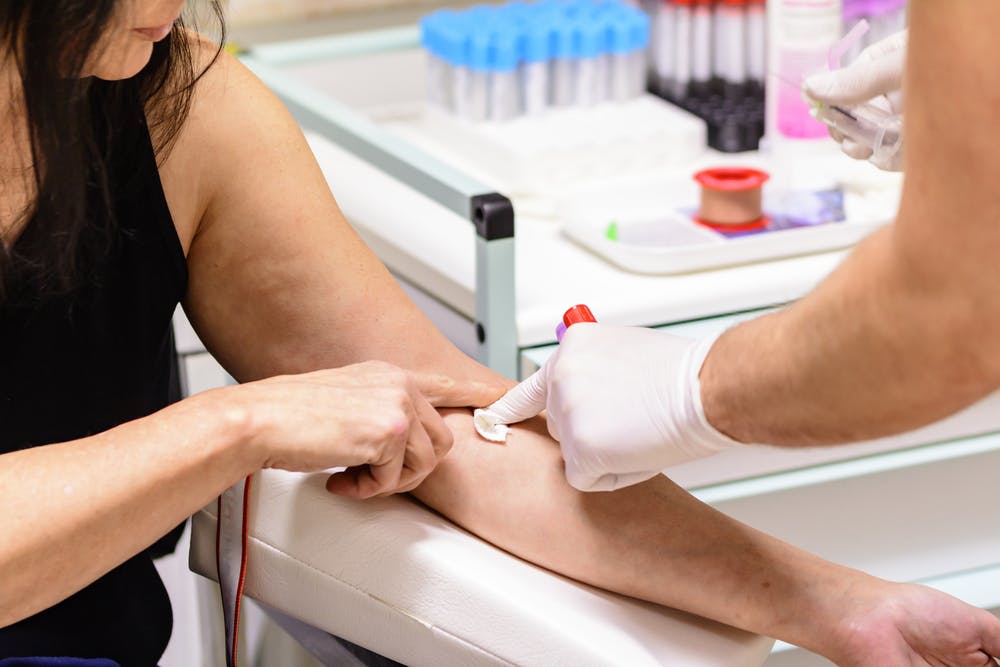Progesterone is a key player in both the menstrual cycle and pregnancy. This hormone prepares the endometrial lining so that a fertilized egg may implant. Without fertilization, progesterone levels fall, triggering menstruation. But if a fertilized egg implants, the ovary continues to produce progesterone until 8 weeks into pregnancy.
During in vitro fertilization (IVF), exogenous progesterone is used to stimulate endometrial thickening and maintain that thickening during programmed frozen embryo transfer cycles, according to a study in the Journal of Assisted Reproduction and Genetics. However, the balance between too much and too little of this hormone is crucial for achieving a healthy pregnancy. Research measuring progesterone levels during the luteal phase has shown that supplementation of progesterone during this time impacts the live birth rate.
Measuring Progesterone Levels
During the luteal phase, levels of estradiol and progesterone are measured via a blood test. Transvaginal ultrasound can be used in tandem with this test to measure endometrial changes, including changes to endometrial thickness.

Endometrial thickness shown on ultrasound.
In the Journal of Assisted Reproduction and Genetics study, intramuscular progesterone was initiated when endometrial thickness reached 7 mm or greater, with a trilaminar appearance. Exogenous progesterone administration was continued until 9 weeks of gestation. Hormone levels were checked two days after initiation of supplementation, with embryo transfer occurring on day 6 of intramuscular progesterone administration.
This study found that higher progesterone levels on day 19 during frozen embryo transfer cycles were associated with a poorer pregnancy outcome. However, the authors note that several studies have shown that progesterone values need to fall within a narrow range on the day of human chorionic gonadotropin (hCG) trigger to result in higher pregnancy rates, and that a premature rise in progesterone is correlated with lower live birth rates in fresh IVF cycles. This balancing act is unique to fresh cycles in which exogenously administered gonadotropins drive the ovaries.
One study published in the journal Medicine links endometrial thickness during fresh IVF cycles with endometrial receptivity and a higher live birth rate. Endometrial changes were evaluated utilizing transvaginal ultrasound, measuring in the midsagittal plane of the uterus. Conversely, other studies have found that endometrial thickness on the day of embryo transfer is not a reliable predictor of IVF success. There is also a debate over whether elevated progesterone on the day of hCG trigger affects pregnancy outcomes at all.
Progesterone and IVF: Proceed With Caution
Still, in the past several years, there has been an improved understanding of the adverse effects of prematurely elevated progesterone on IVF cycles — and a consensus that it is negatively associated with pregnancy rates in IVF.
A review in Biology of Reproduction found that premature progesterone elevation still occurs in 5 to 38 percent of all IVF cycles and leads to a prematurely advanced endometrium and "aberrant gene expression seven days later, during the implantation window." By analyzing changes in microscopic RNA and microRNA genes associated with poor endometrial receptivity, researchers found that premature progesterone elevation causes changes in the expression of these genes, in turn causing decreased endometrial receptivity.
Recent studies have begun to elucidate the connection between high progesterone levels on the day of trigger and pregnancy rates. A prematurely advanced endometrium leads to an asynchrony between the embryo and the endometrium. Research has speculated whether the premature rise of progesterone negatively affects the quality of the oocytes, embryo quality or embryo development, but it does not seem to have a direct impact on oocyte quality.
Currently, the literature is still lacking large, randomized controlled trials to evaluate whether to freeze or transfer in cycles that occur with prematurely elevated progesterone. Current standards recommend offering vitrification of embryos in a fresh cycle affected by elevated progesterone for future frozen embryo transfers. Further study is needed to define appropriate thresholds for premature progesterone elevation.


